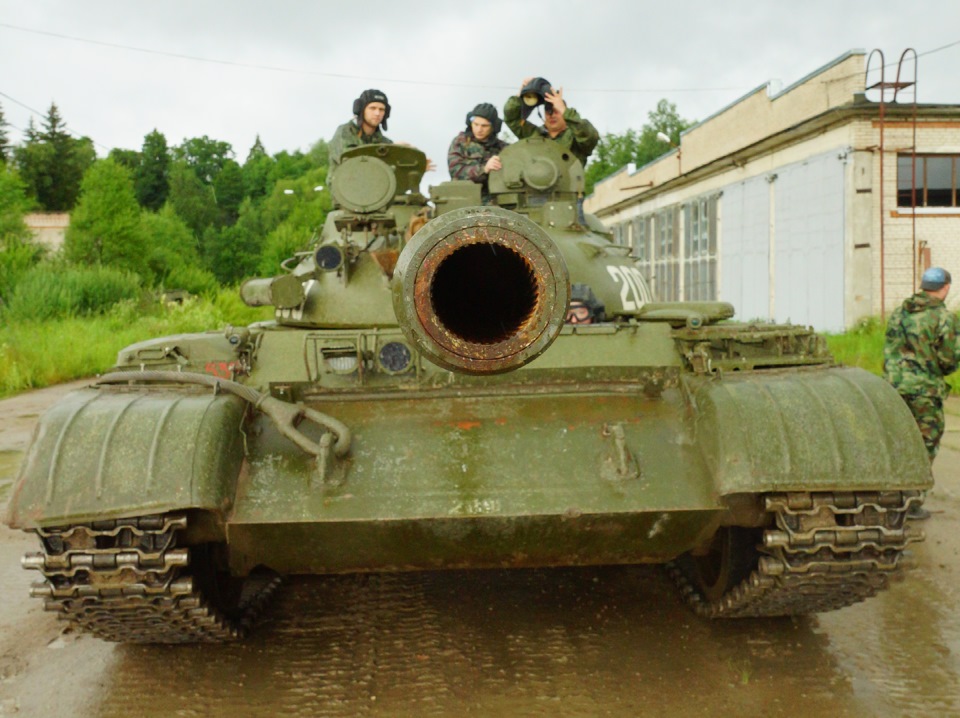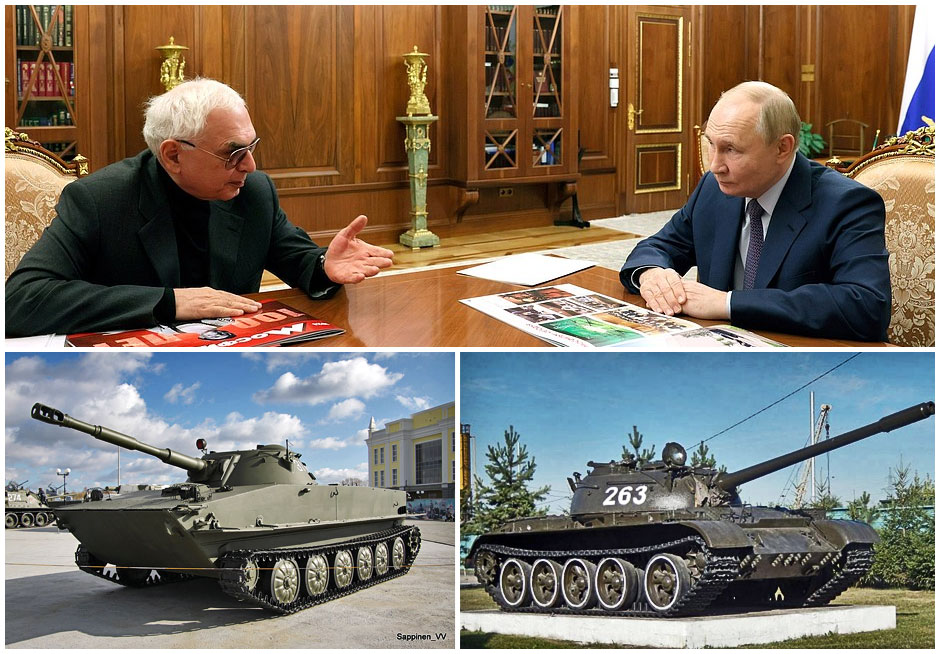On 13 November, Russian President Vladimir Putin met with Karen Shakhnazarov, CEO of the state-owned Mosfilm studio, in the Kremlin. Shakhnazarov disclosed that Mosfilm had handed over its 1950s tanks, previously used as movie props, to the Russian military.
According to the official Kremlin transcript, Shakhnazarov praised Mosfilm as “Europe’s largest film studio,” claiming it rivaled major Hollywood studios such as Warner and Universal. During the meeting, Shakhnazarov also confirmed Mosfilm’s recent military assistance, saying,
“We provided charitable aid of eight million [rubles] ($81,200, - Ed.) this year, including six million for the needs of the special military operation,” he said, using the Kremlin's term for its invasion of Ukraine.
The Mosfilm CEO also disclosed that in 2023, the studio transferred several pieces of Soviet-era military equipment to the Russian armed forces.
“In 2023, we handed over to the Armed Forces 28 T-55 tanks, eight PT-76 tanks, six BMPs, and eight tow vehicles stored at our military-technical base. I learned about the need, contacted the Ministry of Defense, and they collected these vehicles,” Shakhnazarov stated.
Putin responded,
“We are proud of Mosfilm.”
Film props become frontline gear
The Ukrainian military news site Militarnyi highlighted that Mosfilm’s military equipment had previously been used as props for films, series, and tourist activities at its facility in Krasnoznamensk near Moscow.
Mosfilm’s website describes
its “Military Equipment” section as comprising tank, artillery, automotive, and firearms segments, boasting over 190 armored vehicles, armored personnel carriers, and self-propelled units designed to resemble foreign military equipment from various eras. The studio states that “all equipment is stage props, maintained in working condition.”
PT-76
The PT-76, one of the vehicles provided by Mosfilm, is a Soviet amphibious light tank introduced in the early 1950s but discontinued in 1969.

According to Militarnyi, PT-76 tanks have not been spotted in combat zones in Ukraine, yet they could appear due to Russia’s shortage of military vehicles. The publication pointed to other reactivated Soviet vehicles, such as the BTR-50, being used as substitutes on the front lines.
T-55 in Russian army
The T-54 and T-55 tank models are often grouped together due to their similar design lineage and modifications over the years.
Introduced in 1948, the T-54/T-55 tank family is considered outdated by modern standards, with critical vulnerabilities, including low armor protection, lack of rangefinders and ballistic computers, basic sights, and an incomplete stabilization system for the main gun. Despite these limitations, Russia has relied on them due to high armor losses.

Militarnyi noted that the Russian army started actively deploying T-55 and T-54 tanks in the Russo-Ukrainian war as makeshift artillery, fire support vehicles, and infantry transports since March 2023.
According to OSINT project Oryx, tracking the visually confirmed equipment losses, Russia has lost at least 13 T-55s and T-54s in various modifications during Russia's ongoing full-scale invasion of Ukraine.
Currently, Militarnyi reports, three Russian tank factories are involved in tank restoration, but only one specializes in repairing models like the T-55 and T-62, the 103rd Armored Repair Plant.
T-34s from early 1940s next?
Laos, in 2019, provided 30 T-34 tanks from World War II to Russia, either as a gift or sale, according to conflicting reports. Moscow intended these tanks for ceremonial parades and film use. The T-34-85 tanks from Laos were reportedly united within Russia’s 4th Kantemirovka Tank Division back in 2021, prior to the full-scale invasion of Ukraine. Since then, Russia had been training some tank crews and mechanics on T-34 use and maintenance.
Russian propaganda heavily promotes the T-34, framing it as a “weapon of victory” in World War II. The possibility of these T-34s being deployed to Ukraine increases in time as Russia faces severe equipment shortages and high loss rates on the frontlines.
In 2023 Defense Express highlighted the possibility of T-34 tanks being deployed in Ukraine, potentially as ideological symbols to boost the morale of Russian soldiers.
Related:
- Germany uses Soviet museum tanks to train Ukrainian forces on Russian traps
- Russia’s current equipment losses highest since 2022
- WWI and WWII firearm relics still used in Russo-Ukrainian war
- Analyst: Russia demothballs 7.5x more artillery than West sends Ukraine
- Russia runs out of tanks as war intensifies
- Moscow Times: Over 40% of tanks removed from Russia’s largest storage site since Ukraine invasion
- Russia uses antiquated armor as vehicle bombs in Ukraine – UK intel
- More museum pieces: Russia brings T-54 tanks designed in late 1940s out of retirement – CIT

